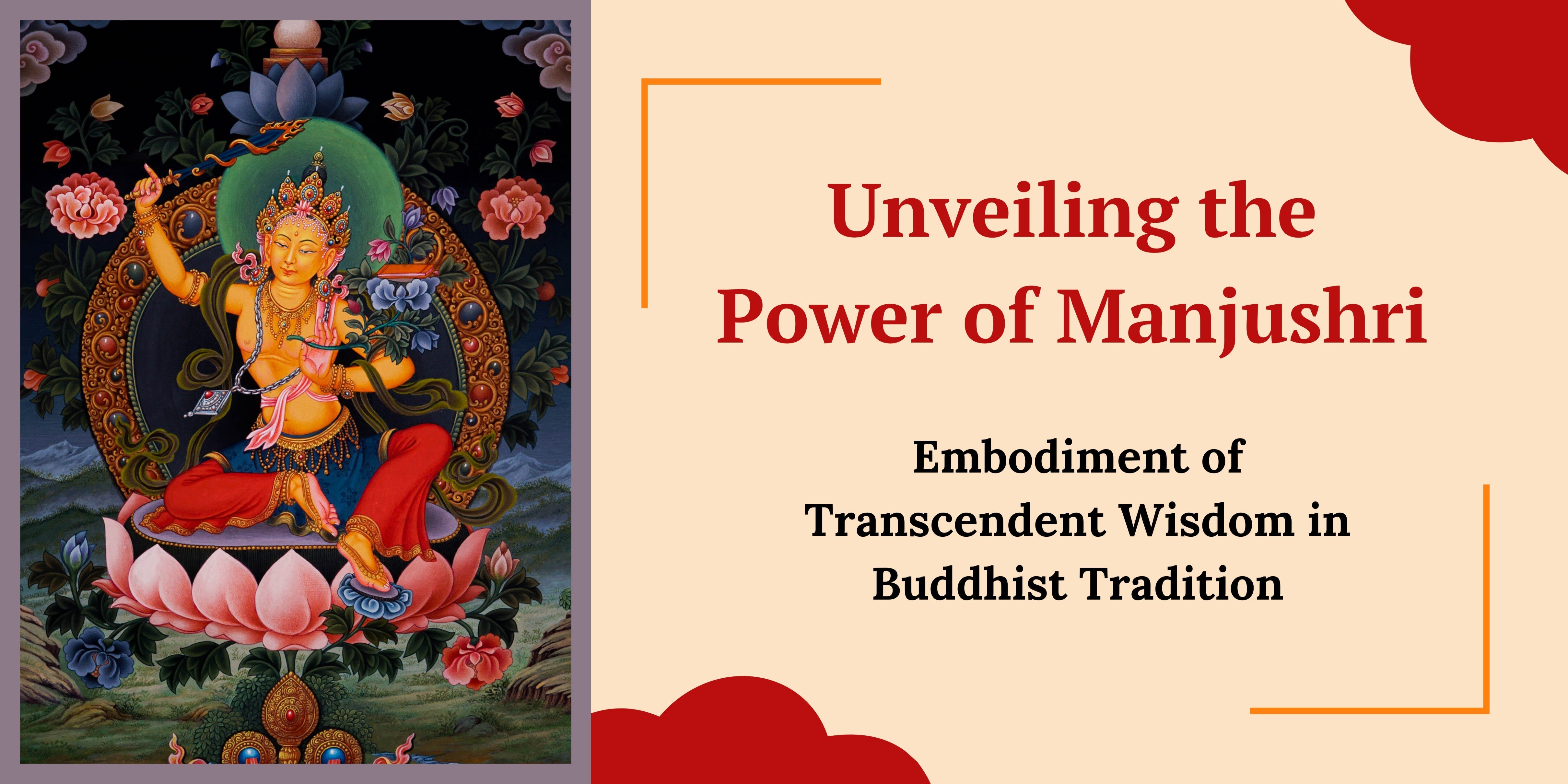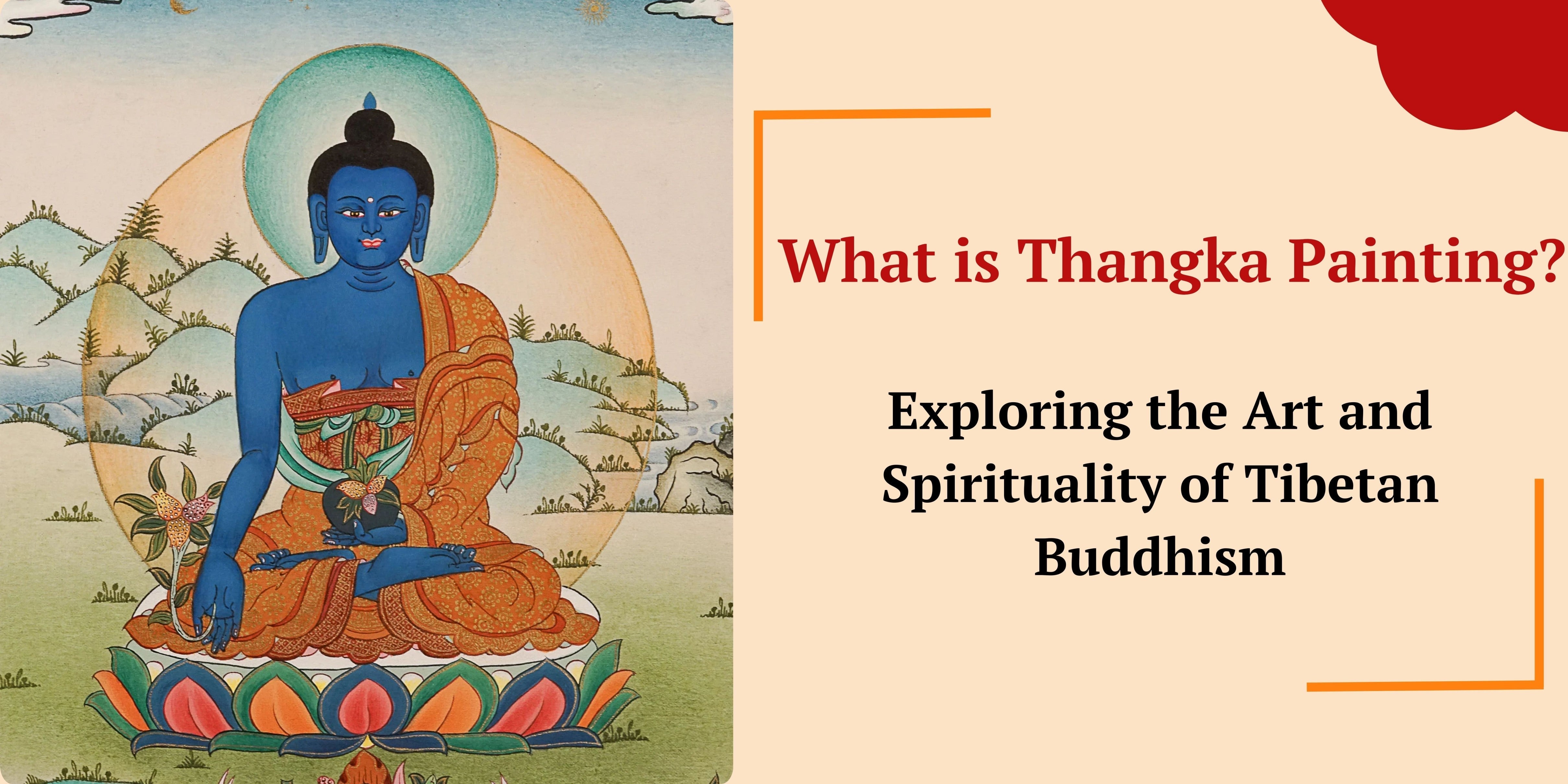
Unveiling the Power of Manjushri
Manjushri, the Bodhisattva of Wisdom is a specific prominent bodhisattva who is especially revered in the Buddhist universe. Manjushree, blessed with an inspiring past and deep symbolic meaning, is a prominent figure in the spiritual life of Buddhists and a constant source of inspiration for those pursuing enlightenment.
The Origins of Manjushri
Manjushri, also known as "Gentle Glory" or "Sweet Splendor," is a prominent figure in Mahayana Buddhist traditions, deeply rooted in the Prajnaparamita Sutras, which focus on the pursuit of perfect wisdom. He is often depicted as an emanation of the primordial Buddha, such as Adi Buddha or Samantabhadra, representing ultimate wisdom that transcends both time and space. In Buddhist scriptures, Manjushri is revered as a symbol of perfect wisdom, encouraging practitioners to move beyond dualistic thinking and embrace the timeless and all-encompassing nature of wisdom. His story and teachings continue to inspire countless followers in their spiritual journey.
According to Nepalese Buddhist legend, Manjushri, the Bodhisattva of Wisdom, played a pivotal role in shaping the Kathmandu Valley. The valley was once a vast lake with a self-emerged flame, the Swayambhu Jyotirupa, at its center. Recognizing its spiritual potential, Manjushri used his flaming sword of wisdom to cut a gorge at Chobhar, draining the lake and making the valley habitable. He placed the sacred flame at the Swayambhunath Stupa, one of the holiest Buddhist shrines in Nepal and a UNESCO World Heritage Site. Symbolizing the triumph of wisdom over ignorance, Manjushri is celebrated in Nepalese culture, with his story immortalized in festivals, art, and teachings.
The Role of Wisdom in Buddhism
Manjushri's definition as the Bodhisattva of Wisdom emphasizes the prominence of wisdom in Buddhism. Wisdom (prajna) is one of the perfections (paramitas) that Buddhist aspire for on their journey to enlightenment. Wisdom is the insight and judgment that leads to the revelation of reality's actual essence.
The practitioners aim to overcome ignorance and suffering by understanding the fragility, interconnectedness, and emptiness of all phenomena, with Manjushri serving as an inspiration for improving intellect and intuitive grasp of Dharma.

The Representation And Symbolism Of Manjushri
Manjushri is represented in Buddhist art and sculpture with distinguishing features that represent his status as the Bodhisattva of Wisdom.
Manjushri is represented with an orange or saffron-colored body, representing the radiance of wisdom's bright light.
Manjushri holds a sword and a scripture in each of his hands. The sword depicts his capacity to cut through ignorance and deception, while the book represents the scriptures' wisdom and knowledge.
He sits on a lotus seat which represents purity and enlightenment. This position symbolizes his ultimate waking.
Manjushri's crown is decorated with five gems that represent the five Buddha wisdoms.
Manjushri Mantra: "Om Ah Ra Pa Ca Na Dhih"

The Manjushri Mantra, also known as the "Om Ah Ra Pa Ca Na Dhih" mantra, is a powerful incantation to seek Manjushri's blessings and guidance.
"Om" represents the universal sound, the essence of reality.
"Ah" indicates the immunity of wisdom.
"Ra" represents the glowing illumination of wisdom.
"Pa" represents the crowning glory of wisdom.
"Ca" embodies the wisdom of discernment.
"Na" indicates the ultimate reality's knowledge.
"Dhih" desires insight from Manjushri's knowledge.
Manjushri in Different Traditions:
Manjushri, the Bodhisattva of Wisdom, is revered in Buddhist traditions as a symbol of enlightenment. His knowledge transcends boundaries, guiding individuals on their spiritual journey. This inquiry explores the various Buddhist traditions and the cultural tapestry of knowledge Manjushri weaves, highlighting his luminous presence.
Manjushri in Tibetan Buddhism: The Goddess of Wisdom and Leadership
In the mystery realm of Tibetan Buddhism, Manjushri holds an essential role. He's the patron saint of intellectual pursuits. Monks, scholars, and students invoke him, chanting his mantra, "Om Ah Ra Pa Ca Na Dhih," as they seek clarity and insight on their academic journeys.
However, Manjushri's impact reaches beyond lecture halls and monastic libraries. The Dalai Lama, the spiritual leader of Tibetan Buddhism, is thought to be an emanation of Manjushri in Tibetan tradition. This relationship emphasizes the interrelated nature of knowledge and leadership.

Manjushri in Chinese Buddhism: A Holy Haven on Wutai Shan
As we venture into the vast landscape of Chinese Buddhism, we encounter Manjushri's presence in the majestic Wutai Shan (Five-Peak Mountain) of Shanxi province. Here, nature intertwines with spirituality in a profound way.
Wutai Shan is believed to be Manjushri's earthly residence, a holy mountain to which pilgrims go to seek his blessings and knowledge. The rough beauty of the region serves as an environment for an abundance of temples and monasteries that resonate with the knowledge and inspiration gained from Manjushri's spiritual presence.

Manjushri in Japanese Buddhism: The Interpretations of Art
Japan, with its rich cultural tradition, has its own representation of Manjushri. Manjushri is cherished here not only through prayers but also through colorful strokes of creative expression.
Manjushri's beauty is portrayed in wonderful paintings, sculptures, and ceremonies. Japanese Buddhists embrace their faith's creative side, empowering Manjushri's wisdom to spread through every sector of their existence.

Manjushri in Vajrayana Buddhism: The Thunderbolt of Divine Wisdom
Manjushri is recognized in Vajrayana Buddhism, also known as the "Diamond Vehicle," as a flaming embodiment of wisdom. In this position, he holds the "vajra," a symbolic thunderbolt that represents the unbreakable essence of knowledge.
Manjushri's vajra breaks through ignorance and delusion, allowing for clarity and enlightenment. Manjushri's energy and knowledge are transmitted for spiritual development in the obsessive rituals of Vajrayana Buddhism.
Manjushri as a Unifying Presence in Southeast Asian Buddhism
Manjushri's knowledge is a uniting attraction in Southeast Asian Buddhism. He overcomes regional and cultural differences by serving as a universal emblem of enlightenment. Manjushri's essence unifies disparate cultures in their search of wisdom and spiritual progress, whether in the jungles of Thailand or the temples of Cambodia.


